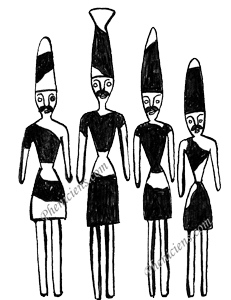Discovering the Phoenicians
Before exposing the origins of the Phoenicians and before locating Phoenicia in its geographical and political context of that period, it is interesting to know how the researchers' interest towards this civilization has been manifested.
The story of discovery
According to the historian Nina Jidejian(1), in the nineteenth century, archeology was the favorite pastime of diplomats and collectors. At that time, no controls were exercised over the archaeological treasures haphazardly discovered. Most of those treasures were exported from their original sites to foreign museums, art galleries or privates collections.
Aimé Péretié, Chancellor of the Consulate General of France in Beirut, was one of those "amateur archaeologists". In February 20, 1855, rummaging Magharat Tabloun (an ancient necropolis site in Sidon), his foreman discovers the sarcophagus of Echmounazor king of Sidon in the fifth century BC. On the cover was an engraved inscription of 22 lines denoting a curse against those who would trouble his eternal rest. The information of this discovery was quickly circulated, the Ottoman governor of Sidon was immediately posting guards on the site, while the English and French consuls discussed the possession rights of the found objects. Albert de Luynes, a member of "L'Académie royale des inscriptions et belles-lettres" and the Royal Academy of Berlin, ended the quarrel by convincing Péretié to offer this treasure to France. Thus the sarcophagus became the property of France and is now throne in the Phoenician halls of the Louvre museum.
At this time, the attention of erudite scholars turned to the Phoenician civilization, and a lot of archaeologists were heading to the Lebanese coast. Napoleon III commissioned in 1860, Ernest Renan, a specialist in Semitic philology, to study and report on the ancient sites of Phoenicia. Excavations began in Tyre (Sour), Sidon (Saida), Byblos (Jbayl) and Arwad (Rouad Island). The research results were published in a French monumental book, entitled "Mission en Phénicie" and published in 1864.
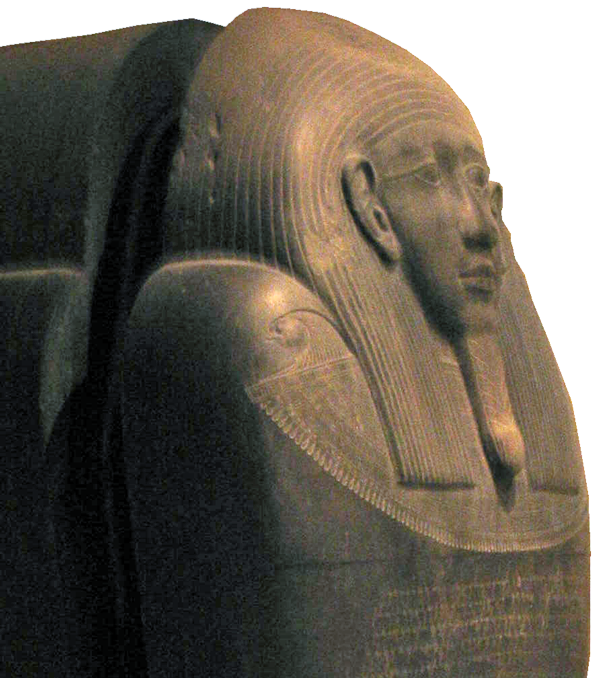
Sarcophagus of Eshmunazar - Louvre
The growing interest in this new wealth provoked a series of pillage, which led the authorities of Istanbul in 1874 (Lebanon belonged to the Ottoman Empire from 1516 to 1918), to intervene in archaeological sites, in order to protect them and to prohibit the smuggling of antiquities abroad. Those treasuress, were thereof destined to the Imperial Museum of Istanbul.
After the First World War, and the decision of the League of Nations (LN) to put Lebanon and Syria under the French mandate, the new authority began to organize and coordinate the excavations and established archaeological institutions. The number of researchers was important, they were from all nationalities. We chose to name two of them, who were marked by their devotion and professionalism in contemporary archaeological research: Maurice Dunand, a French archaeologist, and Maurice Chehab, a Lebanese archaeologist, historian and senior official.
Maurice Dunand (1898 - 1987) arrived in 1924 and devoted himself to various excavations in Phoenician sites, more particularly the site of Byblos (succeeding Pierre Montet). He directed more than forty four series of archaeological excavations until 1959. As a result of his efforts, the site of Byblos became the only one in the Middle East having been completely excavated, and this from the Crusader period until the first evidence of his occupation in the sixth millennium BC.

Emir Maurice Chehab
The Emir Maurice Chehab (1904 - 1994), a descendant of one of the greatest Lebanese families, is the founder of several archaeological institutions. In 1936, he organized the structures of the Lebanese Antiquities Service, central administration and regional inspections, and was its director until 1982. His great work was the excavations in Tyre, in which he methodically studied the monuments from Roman times.
Years before the Lebanese Civil War, and through international cooperation, several major archaeological projects were undertaken: Excavations of Kamed el-Loz in the southern Beqa' (German team: from 1964 to 1981) at Tell 'Arqa, plain of 'Akkar in the North (IFAPO / Institut Français d'Archéologie du Proche-Orient: French Institute of near Eastern Archaeology from 1972 to 1979), in Sarepta (archaeological mission of the University of Philadelphia from 1969 to 1974), ...
In addition to the land archeology, underwater excavations were undertaken. In 1934, the father Antoine Poidebard and the architect Jean Lauffray combined aerial prospections and submarine researches, to explore the ports of Tyre and Sidon. This type of study was destined for a great future, but shortly after 1975, the intensified civil war stopped the activity of these two missions.(2).
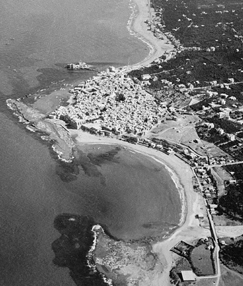
Sidon Sky View
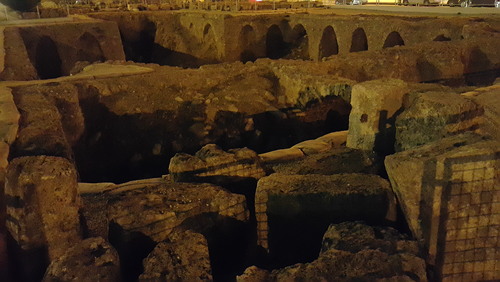
Excavations Downtown Beirut
Since the end of the Lebanese war, the restructuring of the Directorate General of Antiquities (DGA) and the recruitment of several archaeologists, allowed the renewal of research. This has been manifested with the large-scale project in downtown Beirut, as well as the revival of a series of excavations in various Lebanese regions.
Where situated Phoenicia?
The limits of the Phoenician territory, former land of Canaan, have often varied over the centuries. According to the biblical texts, Canaan is the land of uncertain delimitation, extending north from the city of Ugarit to the Mount Carmel in the south. The first references of Canaan appear in the inscription on the statue of Idrimi (king of Alalakh territory, the modern "Tell 'Atchana" on the mouth of Orontes) around the middle of the fifteenth century BC, as well as in el-Amarna letters (Pharaonic archives).
Nearly 1000 years later, Hecataeus asserted that Phoenicia was known as Chna that is in other words Canaan. For the evangelist Matthew, Canaan is limited to the region of the cities of Tyre and Sidon. It seems impossible to know when the Phoenician territory identification has occurred, replacing the term Land of Canaan(3).
In the seventh century BC, the Greeks were the first to use the name Phoenicia. The territory constituted, at that time, the whole coastal zone ranging from the Casius Mount in the north, to Haifa in the south. Inside this region, several cities were urban centers with some significance, such as: Ugarit (Ras Shamra), Arwad, Byblos (Jbeil), Berytus (Beirut), Sidon (Saida), Tyre (Sour) and Akka. Phoenicia then occupied the coastal strip between the mountains of Lebanon and the Mediterranean Sea, a diverse area with different nature between the port sites, small plains and a Backcountry of mountains, where the cedars grow. The circulation was not easy, as the hinterland could only be reached via two rugged mountain ranges, and even along the coastline itself, where often the mountain plunges directly into the sea.
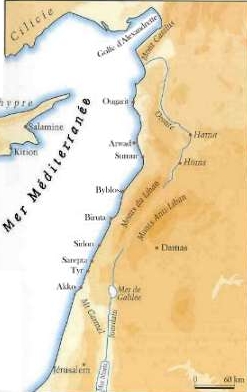
Maps of Phoenician Cities
Who are the Phoenicians?
The origins of the Phoenicians belong to Archaeology as much as to legend and mythology. This courageous people, installed on the coast of present-day Lebanon, asserted his marine qualities during the II millennium Before Common Era, and undertook the conquest of the seas between the thirteenth and the ninth century BC.

The Phoenix
The pursuit of the sun has led some people to believe in a particular connection with the legend of the Phoenix, the mythical bird, seeking to reach the sun, which burns its wings and is reborn from ashes. Like the Phoenix, they braved the waves searching for wealth, ignoring the searing sun's burning their skin red, without slowing down their love of the sea. But in reality, who are those people, named also "the red men"? Various theories were presented and defended, each one attempting to explain, by its own arguments, the origin of this name. We shall try to present some of them.
Some historians(4) indicate that in general, we reserved the name Phoenicians, to people who inhabited the coast of present-day Lebanon during the Iron Age, between the said invasions of "Sea Peoples" which disrupted the region around 1180 BC and the conquest by the Alexander armies in 332 BC. It was during this period, principally in the Greek sources, that the "Phoenician" expression was used
The Greeks used that name (from Greek: Phoinix) designating them, either due to the purple dye which the Phoenician craftsmen had invented as a sort of luxurious status, or due to the color of their skin that would have appeared "coppery".
Another theory is less common and quite controversial(5), evoking the legendary tradition, about a native people of Arabia, called the "Himyarites": "red people", who came, at the II millennium BC, to entrench on the narrow band of land between the Mediterranean Sea and the Lebanon mountains.
There are certainly in Himyars, Himyarites, the term H.M.R still indicates today, in Arabic, the red color. They have also given their designation to the Red Sea that they had frequented, and followed in their migratory voyage to the west. Their own monumental script and language (also called old South Arabian) seems to have some association with the Phoenician and Arabic alphabet.
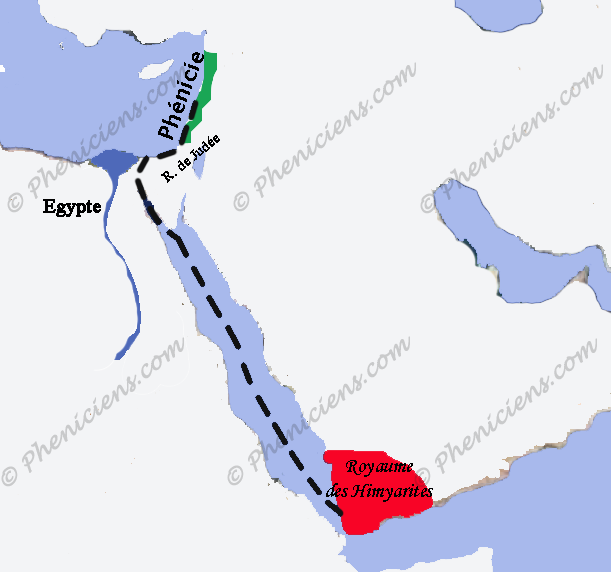
Himyarite migration
Their kingdom was designated by the Egyptians as "Land of Poun". Poun Pouaniti, Poeni and Puni, constitute the same expressions to designate both the Phoenicians, and several centuries later, the Punic of Carthage. The Himyars have in fact been the precursors of the Phoenicians. They already organized a maritime trade with India, Arabia and Africa, before settling down on the coastline of Lebanon. They also discovered the fabulous kingdom of Ophir, which to date, has still not been situated. They constructed houses with many floors, as replicated later in Tyre…
The country, in which they settled down (this passage between the Mediterranean Sea and the mountains of Lebanon), was already populated with sedentary Canaanite tribes, a people who excelled in the art of agriculture. The Bible on several occasions, gives a fairly detailed description of the land of Canaan, a country which included the most high and low fertile plains of Lebanon today. A new breed forged, little by little, who created in different points on the coast, several active cities, real hyphens between maritime commerce and farming. A new people, with particular characteristics, a successor of the Himyarites, with entrepreneurial spirit and the soundness of the rough Canaanite farmers, were born: the Phoenicians.
This hypothesis confirms the ideas put forward by some ancient authors such as Strabo, who has used some information provided by Androsthenes, explorer and admiral of Alexander the Great, to say that the Phoenicians were from the Gulf. Justin, a Roman historian, wrote, that the Phoenicians were forced to leave their land as a result of an earthquake, and settle down , for some time, in "ad Syriam Stagnum" (probably the Dead Sea), before founding their cities on the coast. Herodotus, during his visit to Tyre towards 450 BC, learned that the foundation of the city dates back to 2300 years so around 2750 BCE, and he claimed that its inhabitants had arrived from the Sea of Eritrea (which, at that time, corresponded to the Red Sea, the Gulf and a part of the Indian ocean).
Dr. Pierre Zalloua, Dean of the Faculty of Pharmacy at LAU (Lebanese American University) and professor of genetics, conducted a research on the genetic relationships among the Mediterranean populations and those of the Middle East. This scientific study was part of a Genographic Project and was sponsored by the National Geographic Society.
Despite these multiple explanations, one thing is for sure, the people of the Mediterranean coast were attached to their autonomy, defined by their belonging to their city: Tyrians (Tyre), Sidonians (Sidon), Giblites (Gebal / Byblos) ... foreign references unified them by calling these people: Canaanites (in the Bible) and then Phoenicians (by Greek sources).
| (1) |
Cf. Collectif, Liban, l'autre rive, IMA - Flammarion, Paris, 1998, "L'archéologie au XIX° siècle" par Nina Jidejian, p.23. |
Retour texte |
| (2) |
Cf. F. Briquel-Chatonnet & E. Gubel, Les Phéniciens. Aux origines du Liban, Découvertes Gallimard, Paris, 1998, p.32. |
Retour texte |
| (3) |
Cf. A. Gras P.Rouillard & J. Teixidor, L'univers Phénicien, Arthaud, Paris, 1989, p.27. |
Retour texte |
| (4) |
Cf. F. B.-C. & E. G., op.cit., p.15. |
Retour texte |
| (5) |
Cf. J. Mazel, Avec les Phéniciens à la poursuite du soleil sur la route de l'or et de l'étain, Robert Laffont, Paris, 1968, p.25. |
Retour texte |
